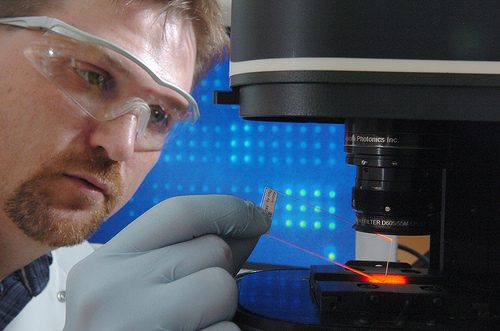Alcohol withdrawal hallucinations represent a severe and distressing symptom of alcohol withdrawal syndrome (AWS). They can be visual, auditory, or tactile and often occur in individuals who have been consuming alcohol heavily for an extended period and then suddenly cease or significantly reduce their intake. Effective management of alcohol withdrawal hallucinations is crucial to ensure safety, alleviate symptoms, and support recovery. This article explores strategies for managing these hallucinations safely, including medical, psychological, and supportive approaches.
Understanding Alcohol Withdrawal Hallucinations
Alcohol Withdrawal Hallucinations are perceptual disturbances that arise when the brain, which has adapted to the depressant effects of alcohol, suddenly faces its absence. The abrupt shift in neurochemical balance leads to increased neuronal excitability and sensory misinterpretations, resulting in hallucinations.
Key Symptoms:
- Visual Hallucinations: Seeing non-existent objects, shapes, or figures.
- Auditory Hallucinations: Hearing sounds or voices that are not present.
- Tactile Hallucinations: Feeling sensations such as insects crawling on the skin.
Immediate Actions and Medical Management
- Seek Medical Attention:
- Emergency Care: Individuals experiencing severe hallucinations or signs of delirium tremens (DTs), such as severe confusion, agitation, or autonomic instability, should seek emergency medical care immediately. DTs are a life-threatening condition that requires prompt and intensive treatment.
- Hospitalization:
- Controlled Environment: Hospitalization is often necessary for individuals with severe alcohol withdrawal hallucinations. It provides a controlled environment where medical professionals can monitor vital signs, manage withdrawal symptoms, and address complications.
- Safety Measures: In a hospital setting, patients are closely monitored to prevent self-harm or harm to others and to ensure effective management of symptoms.
- Medications:
- Benzodiazepines: Medications such as diazepam or lorazepam are commonly used to manage withdrawal symptoms and prevent the progression to DTs. These drugs help to stabilize neurotransmitter activity and reduce neuronal excitability, which can mitigate hallucinations.
- Antipsychotics: In some cases, antipsychotic medications may be used to manage severe hallucinations, especially if they are accompanied by significant agitation or psychotic symptoms. However, these are generally used with caution due to potential side effects.
- Nutritional Support:
- Hydration and Electrolytes: Maintaining proper hydration and correcting any electrolyte imbalances are essential for recovery. Intravenous fluids and electrolyte solutions may be administered if necessary.
- Vitamin Supplementation: Thiamine (vitamin B1) supplementation is crucial to prevent Wernicke-Korsakoff syndrome, a serious neurological condition that can occur due to alcohol-related nutritional deficiencies.
Psychological and Behavioral Approaches
- Therapeutic Interventions:
- Cognitive Behavioral Therapy (CBT): CBT can help individuals manage anxiety and stress that may exacerbate hallucinations. It provides strategies for changing negative thought patterns and improving coping mechanisms.
- Supportive Counseling: One-on-one counseling can offer emotional support, address underlying psychological issues, and provide guidance for managing withdrawal symptoms.
- Stress Management Techniques:
- Relaxation Techniques: Methods such as deep breathing exercises, progressive muscle relaxation, and meditation can help reduce anxiety and stress, which may alleviate the intensity of hallucinations.
- Routine and Structure: Establishing a daily routine and engaging in calming activities can help provide stability and reduce the psychological impact of withdrawal symptoms.
- Monitoring and Support:
- Regular Check-ins: Frequent check-ins with healthcare providers or mental health professionals can help monitor progress, adjust treatment plans, and provide ongoing support.
- Peer Support: Support groups or group therapy sessions can offer a sense of community and shared experience, which can be beneficial for managing withdrawal symptoms and promoting recovery.
Long-Term Strategies for Managing and Preventing Hallucinations
- Gradual Reduction of Alcohol Intake:
- Tapering Off: For individuals looking to reduce alcohol consumption, a gradual tapering approach is often recommended. This method helps to minimize withdrawal symptoms and reduce the risk of severe reactions.
- Medical Supervision: Gradual reduction should be conducted under medical supervision to ensure safety and manage any emerging symptoms effectively.
- Long-Term Treatment for Alcohol Use Disorder:
- Substance Use Programs: Participation in comprehensive substance use treatment programs, including counseling, behavioral therapy, and relapse prevention strategies, can support long-term recovery and reduce the likelihood of severe withdrawal symptoms.
- Aftercare and Follow-Up: Ongoing aftercare and follow-up appointments with healthcare providers are essential for maintaining sobriety and addressing any continuing or emerging issues related to alcohol use.
- Healthy Lifestyle Changes:
- Balanced Diet and Exercise: Adopting a healthy diet and engaging in regular physical activity can support overall well-being and recovery. These lifestyle changes can improve physical health and reduce stress, contributing to better management of withdrawal symptoms.
- Avoiding Triggers: Identifying and avoiding triggers that may prompt alcohol use or exacerbate withdrawal symptoms is crucial for sustaining recovery and preventing relapse.
When to Seek Help
- Signs of Worsening Symptoms:
- Severe Symptoms: If hallucinations become more intense, are accompanied by severe agitation or confusion, or if there are signs of autonomic instability (such as elevated heart rate, high blood pressure, or fever), immediate medical attention is necessary.
- Self-Harm Risk: If there is a risk of self-harm or harm to others, seeking emergency care is essential to ensure safety and appropriate management.
- Persistent or Recurrent Symptoms:
- Ongoing Hallucinations: If hallucinations persist beyond the initial withdrawal period or recur after a period of sobriety, further evaluation and treatment may be required. Persistent symptoms may indicate an underlying psychiatric condition or the need for adjusted treatment.
Conclusion
Managing alcohol withdrawal hallucinations safely involves a multifaceted approach that includes immediate medical intervention, psychological support, and long-term recovery strategies. Recognizing the severity of symptoms, seeking appropriate medical care, and implementing effective management techniques are essential for ensuring a safe and successful recovery. By addressing both the physical and psychological aspects of withdrawal, individuals can navigate the challenges of alcohol cessation and work towards a healthier and more stable life. If you or someone you know is experiencing alcohol withdrawal hallucinations, consult with healthcare professionals to receive the necessary support and treatment.








